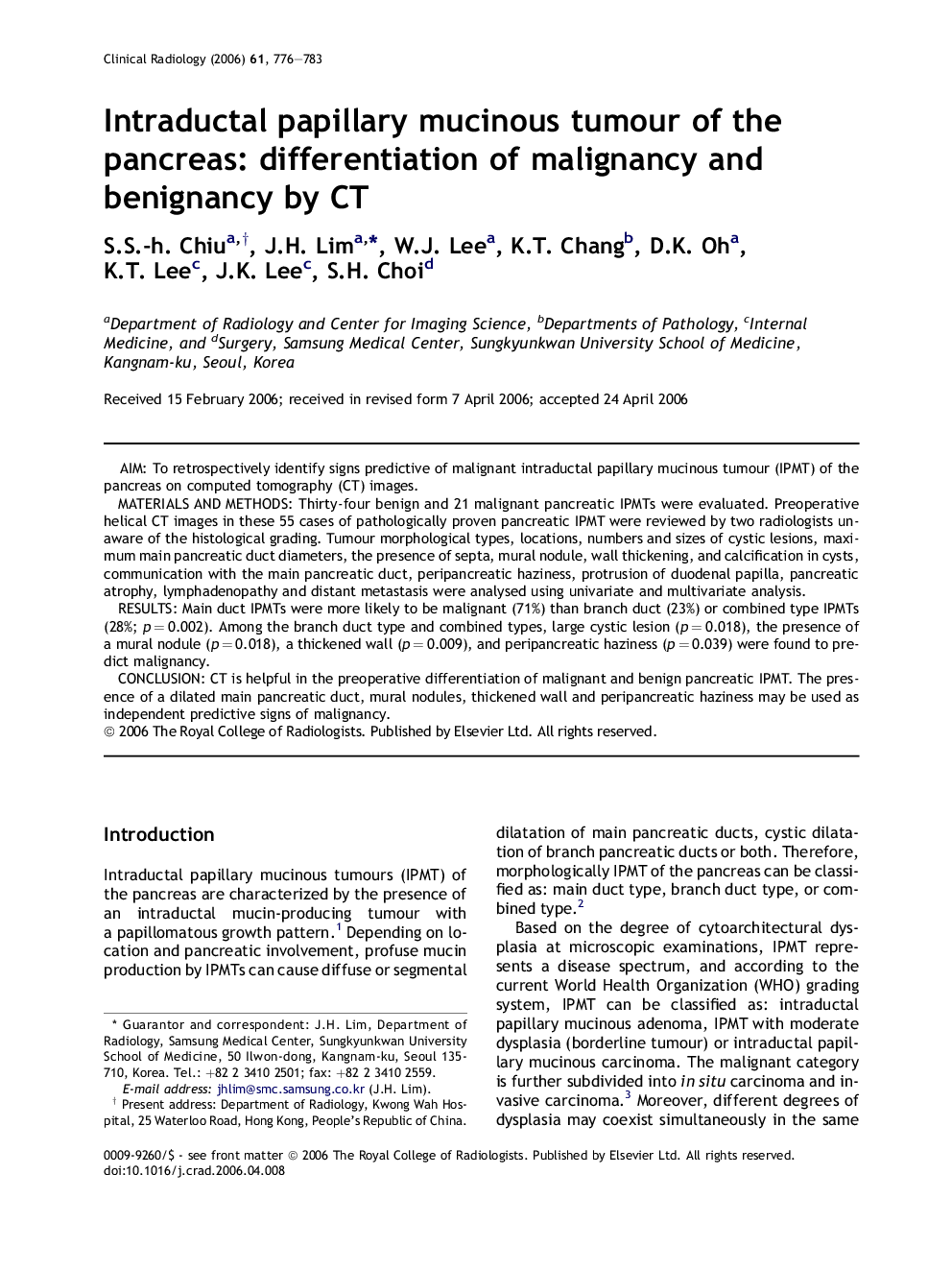| Article ID | Journal | Published Year | Pages | File Type |
|---|---|---|---|---|
| 3983655 | Clinical Radiology | 2006 | 8 Pages |
AimTo retrospectively identify signs predictive of malignant intraductal papillary mucinous tumour (IPMT) of the pancreas on computed tomography (CT) images.Materials and methodsThirty-four benign and 21 malignant pancreatic IPMTs were evaluated. Preoperative helical CT images in these 55 cases of pathologically proven pancreatic IPMT were reviewed by two radiologists unaware of the histological grading. Tumour morphological types, locations, numbers and sizes of cystic lesions, maximum main pancreatic duct diameters, the presence of septa, mural nodule, wall thickening, and calcification in cysts, communication with the main pancreatic duct, peripancreatic haziness, protrusion of duodenal papilla, pancreatic atrophy, lymphadenopathy and distant metastasis were analysed using univariate and multivariate analysis.ResultsMain duct IPMTs were more likely to be malignant (71%) than branch duct (23%) or combined type IPMTs (28%; p = 0.002). Among the branch duct type and combined types, large cystic lesion (p = 0.018), the presence of a mural nodule (p = 0.018), a thickened wall (p = 0.009), and peripancreatic haziness (p = 0.039) were found to predict malignancy.ConclusionCT is helpful in the preoperative differentiation of malignant and benign pancreatic IPMT. The presence of a dilated main pancreatic duct, mural nodules, thickened wall and peripancreatic haziness may be used as independent predictive signs of malignancy.
